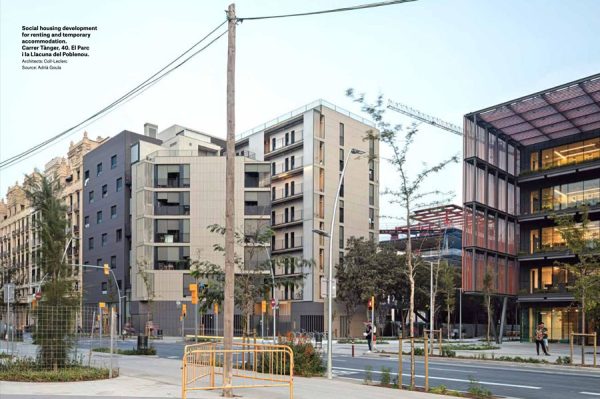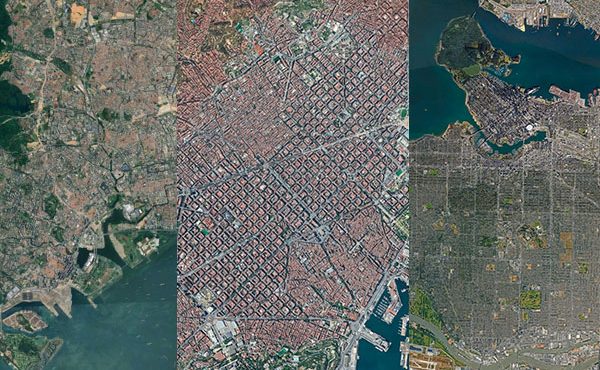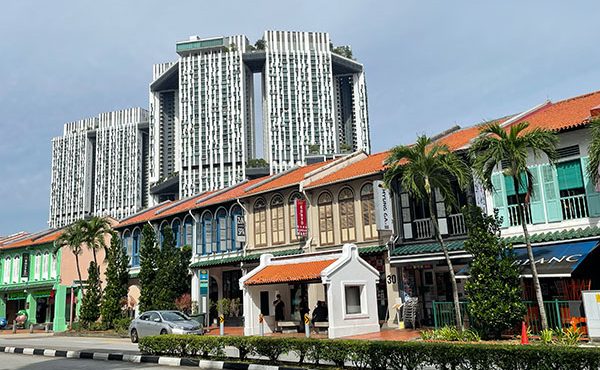
The housing supply is crucial to Barcelona’s affordable and social housing efforts, as outlined in the Barcelona Housing Policy 2015-2023 and emphasized by Eduard Cabré Romans. Their goal was clear: expand and diversify the housing stock to meet the city’s growing demand for affordable and accessible homes.
But how?
Javier Burón Cuadrado, Barcelona’s housing manager, captures their approach succinctly: “Housing is too important to be left solely to the market or the State. A mix of public, private, and community solutions will lead to effectiveness and efficiency.”
Seven key strategies guide this approach. Each is briefly described below in no order of importance since all play a vital role in Barcelona’s multifaceted plan to address housing needs.
New Housing Development
To increase the construction of public housing, Barcelona invests in new construction directly through municipal funds and private partnerships. The focus extends to promoting social and cooperative housing, offering alternative affordable options for residents.
Rehabilitation and Maintenance of Existing Housing
The city prioritizes rehabilitating older buildings to increase the supply of affordable housing units. It focuses on improving the existing housing stock to boost safety, energy efficiency, and accessibility. This ensures more affordable housing options through modernization.
Utilization of Vacant Properties
Efforts are made to identify and repurpose vacant or underused properties for residential use. This includes measures to discourage property speculation and incentivize the renovation and occupation of empty homes, making better use of available resources.
Inclusionary Zoning and Land Use Policies
The city applies inclusionary zoning regulations, requiring new developments to include a percentage of affordable housing units—exemplified by the “30% measure” that will be looked at in more detail in a later article. Strategic land use planning ensures that growth happens in areas with proper infrastructure and services.
Innovative Housing Models and Tenure Forms
The city supports innovative housing solutions like co-living, cooperative housing, and modular housing. It also promotes a diversity of tenure forms, and increasing housing access for various population segments. Homeownership is encouraged through long-term leaseholds.
Financial Mechanisms and Incentives
Barcelona leverages public subsidies, tax incentives, and low-interest loans to drive housing construction and rehabilitation. Partnerships with financial institutions and private investors are fostered to mobilize additional funding for housing projects.
Monitoring and Evaluation
Ongoing monitoring and evaluation of housing supply initiatives is considered necessary to ensure the city meets its goals and can adapt to changing needs. Thus, data on housing demand, supply, and market trends is continuously collected and analyzed to inform policy adjustments and resource allocation.
This is done through a dedicated body called Barcelona Metropolitan Housing Observatory (O-HB)—described as a “supra-municipal entity dedicated to the research and data analysis” of housing. Its main purpose is to support the creation, assessment, and evaluation of housing policy in Barcelona and inform evidence-based policy decisions. The O-HB, along with the city’s strong, intentional connections to academic research, underscores Barcelona’s commitment to an evidence-driven approach to housing policy.
It’s worth restating that all seven elements are critical to Barcelona’s housing supply strategy. Removing any would undermine the goal of a sustainable, diverse, and adequate housing supply for Barcelona’s residents, particularly those most vulnerable and in need of affordable housing.
While future pieces will delve deeper into comparing policies between Barcelona and Vancouver, it’s crucial to recognize how different our approaches are locally. Take the Broadway Plan, for instance, which spans 486 blocks and promotes the demolition of many established rental buildings…buildings that Council has refused to gather demovictions data on.
Or the recently launched Social Housing Initiative that blindly targets several established neighbourhoods—like Champlain Heights, which has one of the city’s largest shares of co-operatives and affordable homes—for 15-18 storey residential towers with up to 70% market units (or more). All of this is in the absence of any evidence and clearly defined affordability targets.
However, despite the importance of the above and all seven elements, the British Columbians were particularly interested in Barcelona’s inclusionary zoning policies and other related instruments used by the city. We will now turn our attention to this…
***
Other pieces in The Barcelona Chronicles:
- Part 1 – Introduction
- Part 2 – Cerdà and Colau: Two Key Figures
- Part 3 – The Barcelona Housing Policy 2015-2023 Overview
- Part 4 – Defining Affordable & Social Housing
- Part 6 – The 30% Measure and Others
- Part 7 – Vancouver v. Barcelona – Foundations
- Part 8 – Barcelona v. Vancouver – Strategies
- Part 9 – The Eixample and the Superilla
- Part 10 – The Superilla Pilot
- Part 11 – The Superilla…Evolved
- Part 12 – Vancouver v. Barcelona – Urban Design
- Part 13 – Reflections on Two Cities
***
Erick Villagomez is the Editor-in-Chief at Spacing Vancouver and teaches at UBC’s School of Community and Regional Planning. He is also the author of The Laws of Settlements: 54 Laws Underlying Settlements Across Scale and Culture.




